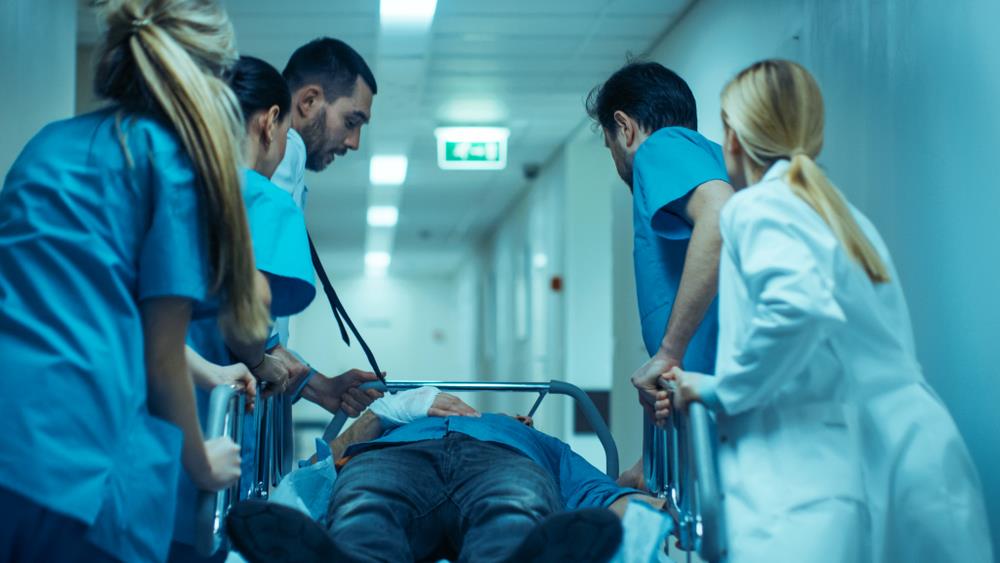Serious Injuries Require Serious Evidence

When faced with a catastrophic injury in Baltimore, Maryland, the aftermath is not merely a matter of physical recovery; it’s a complex journey through legal intricacies and dealing with insurance companies. Victims of such injuries often find themselves navigating a challenging landscape of medical bills, rehabilitation, and legal proceedings.
This article, brought Baltimore catastrophic injury lawyer John Leppler’s law firm, delves into the heart of the matter, exploring what constitutes a “serious” or catastrophic injury in Maryland, and what types of important evidence will greatly improve your accident or injury claim.
What Constitutes a “Serious” or Catastrophic Injury in Baltimore, Maryland?
In personal injury law, the term “catastrophic injury” carries significant weight. These are not mere bumps and bruises but life-altering events that can have enduring consequences for victims and their families. These types of injuries are severe and often permanent ones that result in long-term disabilities. They typically impact a person’s ability to perform gainful work and require extensive medical treatment and rehabilitation.
Examples of catastrophic injuries can range from spinal cord injuries, traumatic brain injuries (TBIs), severe burns, and loss of limbs, to paralysis. The effects are physical, emotional, and financial, often requiring lifelong care and support.
What Are Some Examples of Catastrophic or Serious Injuries?
To grasp the gravity of serious or “catastrophic” injuries, it’s essential to delve into specific examples:
- Spinal Cord Injuries: These can lead to paraplegia or quadriplegia, severely impacting mobility and independence.
- Traumatic Brain Injuries (TBIs): Resulting of severe blows to the head, TBIs can lead to cognitive impairments, memory loss, and personality changes.
- Severe Burns: Beyond the physical pain, burns can cause disfigurement and permanent scarring, affecting a person’s mental well-being.
- Brain Injuries: These traumatic events can lead to cognitive impairments, memory loss, and altered personality traits.
- Amputations: The loss of limbs not only alters physical abilities but also necessitates extensive rehabilitation.
- Multiple Bone Fractures: Severe fractures can lead to chronic pain, limited mobility, and long-term complications.
- Organ Damage: Internal injuries, such as damage to vital organs, can have lasting effects on overall health and well-being.
The Crucial Role of Evidence in Catastrophic Injury Claims in Baltimore, Maryland
When life-altering events occur, such as traumatic brain injuries, spinal cord damage, severe burns, or amputations, the road to justice is paved with meticulous documentation and compelling proof. The burden of proof rests firmly on the shoulders of the plaintiff. Meeting this legal standard, especially in cases of catastrophic injuries, requires a comprehensive collection of persuasive evidence. Here’s where the three essential elements of injury claims come into play: duty of care, breach of duty, and causation.
Duty of Care: Defendants are expected to exercise a reasonable level of care to avoid causing harm to others. Whether it’s a negligent driver on the road or a property owner responsible for maintaining safe premises, this duty forms the foundation of liability.
Breach of Duty: A breach occurs when a defendant fails to uphold their duty of care. For instance, a distracted driver causing a severe accident or a manufacturer releasing a defective product both represent breaches of expected standards.
Causation: Establishing a direct link between the defendant’s breach of duty and the resulting injury is crucial. This element requires showing that the defendant’s actions directly caused the harm suffered by the plaintiff.
What Types of Evidence Will Strengthen My Serious Injury Claim in Baltimore?
In the pursuit of justice, victims and their Baltimore personal injury lawyer rely on a variety of evidence to substantiate their claims including:
- Medical Documentation: From hospital bills to records from diagnostic tools like MRIs and CAT scans, thorough medical documentation provides a clear picture of the injury’s severity.
- Surveillance Footage: In cases involving motor vehicle accidents, CCTV footage from street cameras or dash cam footage from police cars can be invaluable in reconstructing the events leading to the injury.
- Employment Records: Proof of missed work due to the injury, such as doctor’s notes or employer statements, establishes the financial impact on the victim.
- Expert Witness Testimony: Professionals in various fields, from medical experts to accident reconstruction specialists, can provide objective insights into the injury and its consequences.
- Driving Records: Especially relevant in motor vehicle accident cases, a victim’s driving record can help establish liability and the extent of negligence.
The process of gathering evidence begins immediately after the incident, often overlapping with the initial steps of seeking medical attention and reporting the event. Timely actions are crucial to preserving the integrity of critical information:
Physical Evidence
The importance of documenting the scene of the accident cannot be overstated. Photographs of skid marks, debris, property damage, or blood spills should be taken promptly to capture the immediate aftermath of the incident. In addition, any sketches made by the Baltimore police of the scene help recreate the events leading to the injury.
Tangible items directly involved in the incident, such as damaged property and immediate injuries serve as visual proof of the extent of the damage. Additionally, photographs, video footage, and police sketches of the scene help recreate the events leading to the injury.
Any objects relevant to the case, such as defective products or hazardous materials, should be preserved intact, with labels and product details noted.
Medical Records and Documentary Records
Seeking prompt medical care not only ensures proper treatment but also generates detailed records of injuries and their impact. Maintaining personal journals documenting pain, discomfort, and emotional distress also adds layers of evidence.
Records that may not have been physically present at the scene but reveal crucial information about negligence. This includes manuals with safety protocols that were violated, past complaints indicating known hazards, regulatory filings showing violations, and medical charts detailing the extent of injuries.
Testimonials and Statements from Witnesses
Direct statements from witnesses, including those involved in the incident and experts in relevant fields, offer valuable insights into the circumstances of the injury. Witness testimony brings a human perspective to the case, while expert opinions can clarify technical aspects and quantify damages. It is essential to do this as soon as possible before memories fade or individuals become inaccessible. This can also include obtaining insurance information and incident reports from authorities.
Strategic Use of Evidence to Prove Liability and Damages
As the case unfolds, an experienced Baltimore injury attorney such as John Leppler will strategically employ the gathered evidence to establish both liability and damages:
- Proving Liability: Codes, manuals, and safety protocols become crucial in cases where negligence is apparent, such as injuries at commercial establishments due to safety violations. Visual evidence and documentation of prior complaints help demonstrate a pattern of neglect.
- Proving Damages: Medical reports, bills, and treatment plans substantiate the extent of physical harm and associated costs. Financial documents, such as pay stubs and tax filings, aid in calculating lost income, while property valuations and repair invoices quantify property damage.
Damages Potentially Awarded in Catastrophic Injury Cases
When it comes to evaluating the value of a case, several crucial factors come into play, each contributing to the comprehensive assessment of damages that victims may be entitled to in Maryland. When considering compensation, the following elements are typically taken into account:
- Medical Treatment Costs: From initial emergency care to ongoing medical treatment, including surgeries, diagnostic imaging tests, and rehabilitative therapies, the expenses can accumulate rapidly.
- Rehabilitation and Physical Therapy After an Accident in Baltimore: Crucial components of recovery, these ongoing therapies aim to restore functionality and improve quality of life.
- Loss of Wages: For many victims, the inability to work due to the injury results in significant financial strain. Compensation may cover lost wages during recovery periods or, in severe cases, loss of earning capacity if the victim is unable to return to work at all.
- Emotional Trauma Counseling: Coping with the aftermath of a catastrophic injury goes beyond physical recovery. Counseling and therapy expenses to address the emotional toll can be factored into compensation.
- Home Renovations and Medical Devices: Adapting living spaces to accommodate medical equipment or mobility aids may require costly renovations. These expenses, along with the cost of specialized medical devices, are essential for enhancing the victim’s quality of life.
- Loss of Companionship and Support: Catastrophic injuries not only impact the victim but also reverberate through the lives of their loved ones. Compensation may include damages for the loss of companionship and support from a spouse, partner, or family member.
How John Leppler Can Assist Victims of Serious Injuries in Baltimore
In the wake of a catastrophic injury, the road to recovery can feel daunting and overwhelming. This is where Leppler Injury Law can make all the difference. With a dedication to securing justice and maximum compensation for his clients, John approaches each case with a meticulous eye for detail and a steadfast commitment to building strong, trial-ready claims.
A Strategic Approach to Building Cases
John understands that “serious injuries require serious evidence.” This guiding principle underscores his approach to every case he takes on. From the moment he begins representing a client, John is laying the groundwork for a compelling case that can stand up in court.
- Thorough Documentation: One of the first steps John takes is to gather and meticulously review all relevant medical records. These documents serve as the foundation of the case, providing critical insight into the extent of the injuries, required treatments, and prognosis.
- Exploring CCTV Footage: When available, CCTV footage can be a powerful piece of evidence. John leaves no stone unturned, scouring for any footage that may provide crucial details about the incident in question.
- Investigating the Past: Sometimes, the key to proving liability lies in the past. John delves deep into the history of the incident, examining any relevant records or reports that may shed light on the events leading up to the injury.
- Uncovering Driving Records: In cases involving motor vehicle accidents, the driving history of all parties involved can be pivotal. John works tirelessly to obtain and analyze driving records, looking for any factors that may have contributed to the accident.
Leveraging Experience and Expertise
With years of experience in the field of personal injury law, John brings a wealth of knowledge and expertise to each case he handles. His strategic approach is informed by a deep understanding of Maryland’s legal landscape, ensuring that every angle is explored and every opportunity for compensation is pursued.
- Preparing for Trial: While many cases are resolved through negotiation or settlement, John prepares each case as if it were going to trial. This meticulous approach sends a clear message to opposing parties and insurance companies that he is ready to fight for his client’s rights in the courtroom.
- Compassionate Guidance: Beyond his legal acumen, John provides compassionate guidance and support to his clients throughout the entire legal process. He understands the challenges they face and is committed to being a trusted ally every step of the way.
Knowledgeable Catastrophic Injury Lawyer in Baltimore, Maryland
When faced with the life-altering consequences of a catastrophic injury, having a knowledgeable and dedicated legal advocate can make all the difference. John Leppler of Leppler Injury Law in Baltimore, Maryland, stands as a beacon of support for victims seeking justice and fair compensation. With a commitment to meticulous preparation, strategic case building, and unwavering client advocacy, John ensures that every aspect of your case is handled with the utmost care and expertise. Contact Leppler Injury Law today for a free case evaluation.
